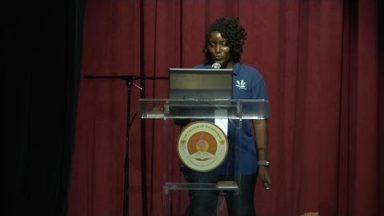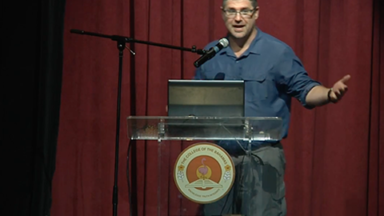Population dynamics and habitat preferences of the lined seahorse (Hippocampus erectus) inhabiting a Bahamian saltwater lake.
Presented by Heather D. Masonjones
Heather D. Masonjones, Emily Rose, Rob Drummond, and Jocelyn Curtis-Quick
Anchialine ponds are habitats frequently associated with unique biota that differs dramatically from nearby coastal systems. Sweetings Pond (91 hectares) on the island of Eleuthera (The Bahamas) is such a system, containing an unusual population of the lined seahorse (Hippocampus erectus). In this study, we investigated the distribution of seahorses by size and sex across habitat types, relative to habitat availability. Thirty-two 30 X 1 meter benthic transects were established around the pond margin and assessed three times over a year and a half timespan (March, July 2014, August 2015). At each sampling event, photos (50 X 50 cm) were taken at each meter (30 total/transect) to characterize benthic cover. Seahorses were mapped along each transect, recording their holdfast type and photographed for morphological analysis. Holdfast preference was determined by statistically comparing holdfasts available from benthic analysis with actual habitat types to which animals were attached. Across the lake, seahorses were seen at more than double the density in the north end (0.22 animals/m2) compared to the south (0.09 animals/m2), with no differences in distribution by gender. Adults were sighted more commonly than juveniles, but results may reflect the cryptic nature of these fish more than lack in abundance of this life stage. Animals were associated with every habitat type, with seahorse association reflecting habitat frequency. Compared to research focused on other seahorse species globally, Sweetings Pond animals have a higher habitat density, no holdfast preference, and are shaped differently than other H. erectus, indicating a population that is a discrete management unit compared to other H. erectus. Given the CITES Appendix II listing of all seahorses and their decreasing numbers worldwide due to overfishing and habitat loss, this population represents a valuable biological resource for Bahamians and one that should be protected.







Recent Comments